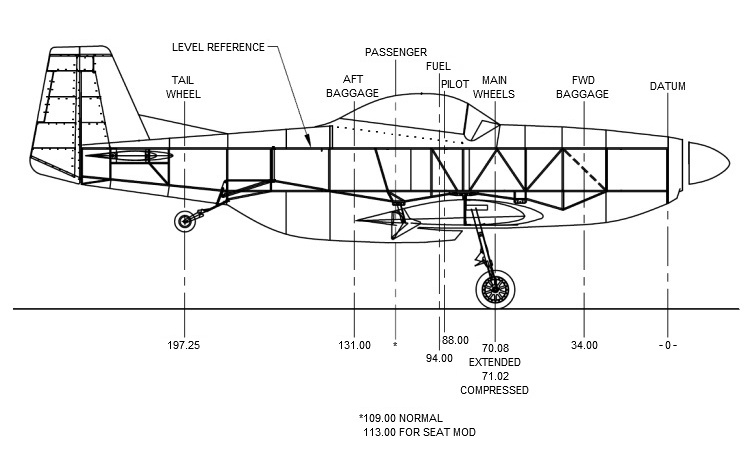|
* Very Important - Figure Weight and Balance Before Flight *
The moment is measured in inch pounds, where the inch dimension is the ARM length and pounds are the force (weight) applied at the ARM location. The datum -0- is the point from which all ARM lengths are measured.
For the airplane, the individual moments for each item are added to give the airplanes total moment (about datum -0-). Next the total moment is divided by the aircrafts flying weight, giving you the C.G. location. The flying weight will change for various pilot weights, passenger weights, and/or fuel amount.
Sample Calculation:
- Perform weight and balance in no wind conditions with airplane leveled using fuselage tube shown as a level reference.
- Measure and record the weights of all three wheels. (Note: Aircraft should be in empty configuration and should be resting on the two main wheels and tail wheel in the level position at all times during the measuring process.)
- Now experiment with different loading conditions, for example: Aft C.G. - 200 lbs pilot, full fuel, no baggage or passenger. Forward C.G. - heavy pilot, no fuel, heavy passenger or baggage.
-
- Fill in weight of aircraft, pilot, passenger, baggage and fuel
- Multiply weight times ARM to get the individual moment
- Add up total flying weight
- Add up total moment
- Divide moment by weight to get C.G.
- Recalculate taking into account fuel comsumption
|
